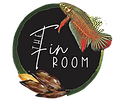The Bentosi Tetra has a wide area of distribution and is known from much of the Amazon River system in Brazil and Peru, along with parts of the Machado River basin in Brazil. These shoaling fish tend to inhabit heavily vegetated areas of sluggish tributaries, where they stay close to the safety of plant cover and submerged roots. The water is soft and acidic, and is often stained a tea-colour due to tannins released from submerged wood and decaying leaves. Ideally, the aquarium should be darkly furnished, with plenty of bogwood and areas of dense planting to emulate this habitat as closely as possible. Whilst the Bentosi Tetra is an adaptable species that will acclimatise to a wide range of conditions, this species will always look its best in soft, acidic water (peat filtration suggested) and the tank must be biologically mature. Bentosi Tetras should always be maintained in good sized groups: 6 would be the minimum recommended, 10+ would be better. Not only will the fish feel more secure, but this will result in a far more effective, natural-looking shoal. Ideally, tankmates will also be small and peaceful, and could include Corydoras catfish, hatchetfish, small dwarf cichlids such as Apistogramma or Mikrogeophagus, and some of the smaller Loricariidae (suckermouth catfish). Bentosi Tetras can be quite easily frightened, so ensure that they are not housed with boisterous species. For many years, the Rosy Tetra (H. rosaceus) was thought to be a subspecies of the Bentosi Tetra. Most fish in the shops labelled as Rosy Tetra are actually H. bentosi. They are extremely difficult to tell apart but H. bentosi is said to display a negligible dark mark just behind the operculum, which is lacking in H. rosaceus. The Bentosi Tetra may also be seen on sale as the Ornate Tetra. A beautiful 'white-finned' variety is sometimes available.
Feeding
Offer a varied diet including a good quality flake, micropellets, and small frozen foods such as bloodworm, white mosquito larvae, vitamin-enriched brineshrimp, and daphnia.
Breeding
Difficult. Eggs are scattered amongst Java moss/spawning mops placed on the bottom of the breeding aquarium. Parents should be removed after spawning has ceased in order to prevent predation. The eggs should hatch after 24-36 hours, with the fry becoming free-swimming after 5 days. Juveniles should be offered infusoria as a first food.
top of page

The Fin Room
Specialist Trader & Dealer Of Aquaria

Company Reg SC758673
£2.99Price
Related Products
bottom of page



















